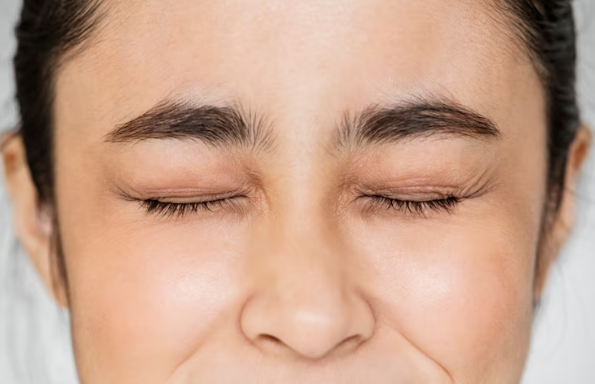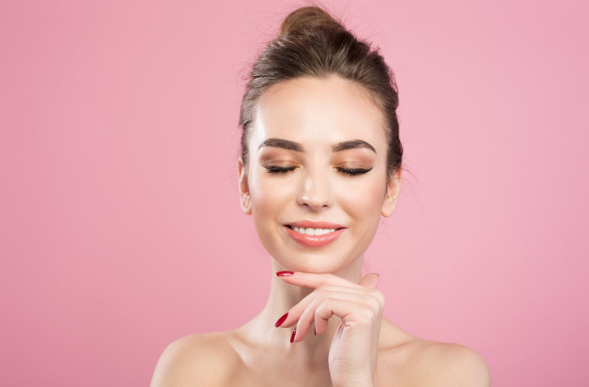
Brow ptosis—a condition characterised by the drooping or sagging of the eyebrows—is often mistaken for general ageing or fatigue. While subtle at first, brow ptosis can eventually interfere with vision and significantly impact facial appearance. Knowing the signs early on allows individuals to seek appropriate treatment options, whether surgical or non-invasive, including options like Alma Hybrid skin therapies that can support overall facial rejuvenation.
In this article, we’ll explore the tell-tale signs of brow ptosis, what causes it, and how both clinical and cosmetic treatments can help restore a refreshed, lifted appearance.
Understanding Brow Ptosis
Brow ptosis occurs when the eyebrows descend below their normal position, typically due to weakened muscles or reduced skin elasticity. It can affect one or both eyebrows and often contributes to a tired, aged, or stern expression.
The position of the brow plays a critical role in framing the eyes and maintaining facial symmetry. When the brow begins to droop, it can also push excess skin over the upper eyelids, exacerbating issues like hooded eyes or visual obstruction.
Common Causes of Brow Ptosis
While brow ptosis is often related to ageing, other contributing factors include:
- Muscle weakness or nerve damage
Damage to the facial nerve, particularly the nerve controlling the frontalis muscle, can lead to one-sided or bilateral brow drooping. - Genetics
Some individuals are genetically predisposed to have lower-set brows or early onset ptosis. - Repeated expressions
Years of repeated facial movements—especially frowning or squinting—can stretch the skin and weaken underlying support structures. - Previous surgery or trauma
Scarring or nerve disruption from facial surgery or trauma can lead to involuntary brow descent.
Signs You May Have Brow Ptosis
Drooping Eyebrows
The most noticeable sign is a visible descent of one or both eyebrows. You may observe:
- A flatter brow arch
- Brows sitting closer to the eyelashes
- An asymmetrical appearance
Brow drooping is especially obvious in photos or when compared to earlier facial images.
Heaviness Around the Eyes
People with brow ptosis often report a sensation of heaviness or pressure above the eyes. This is due to the extra skin and lowered brow pressing down on the upper eyelids. This feeling can intensify as the day progresses, especially if the brow muscles are overcompensating to lift the skin.
Frequent Raising of Eyebrows
If you find yourself constantly lifting your brows to “open” your eyes or look more alert, this may be a subconscious response to brow ptosis. Over time, this can lead to forehead wrinkles and muscle fatigue.
Difficulty Applying Eye Makeup
Brow ptosis can limit the space on the upper eyelid, making it difficult to apply eyeshadow or eyeliner. Makeup may smudge easily, or you may find yourself lifting the brow to apply products evenly.
Visual Disturbance
In more advanced cases, drooping brows and resulting upper eyelid skin folds can partially block the visual field—particularly in the upper and outer portions of your sight. This may be especially noticeable when driving or reading.
Tired or Angry Facial Expression
Brow ptosis can alter your facial expression even when you’re relaxed. People may ask if you’re tired, upset, or unwell—simply due to the way the brows and upper eyelids have shifted.
How Is Brow Ptosis Diagnosed?
A clinical evaluation by a GP, cosmetic surgeon, or oculoplastic specialist can confirm brow ptosis. Diagnosis involves:
- Visual inspection of eyebrow position
- Measuring the distance between the brow and eye (brow-lid margin)
- Assessing upper eyelid function and strength
- Reviewing photos to track changes over time
Your specialist may also assess for conditions like blepharoptosis (eyelid droop), which can sometimes be confused with or occur alongside brow ptosis.
Treatment Options for Brow Ptosis
Treatment depends on the severity of ptosis and whether the concern is cosmetic or functional.
Surgical Options
- Brow Lift (Forehead Lift):
The most direct solution for brow ptosis, this procedure elevates the eyebrows, tightens underlying muscles, and removes excess skin. Several techniques exist, including endoscopic, temporal, and direct brow lifts. - Upper Eyelid Surgery (Blepharoplasty):
Often performed alongside a brow lift to address redundant eyelid skin and improve vision and aesthetics.
Non-Surgical and Adjunctive Treatments
- Anti-Wrinkle Injections:
Strategic Botox injections can help lift the brow slightly by relaxing muscles that pull it downward. Results are temporary but useful for early cases. - Skin Tightening Treatments (e.g. Alma Hybrid):
Alma Hybrid combines ablative and non-ablative laser technology to stimulate collagen, firm skin, and improve elasticity in the forehead and brow area. While not a replacement for surgery, it can be effective for mild cases or as part of a maintenance regimen. - Dermal Fillers:
Fillers can be placed in the temples or under the brow to provide subtle lifting and structural support.
When to Consider Treatment
You might consider treatment if:
- Your drooping brows are affecting your vision
- You’re frequently raising your brows or experiencing forehead fatigue
- You feel your appearance does not reflect how you feel
- You’re finding cosmetic products difficult to apply or ineffective
- You want to improve symmetry or address early ageing signs
Preventative Measures
While you can’t entirely prevent brow ptosis, some habits can help delay its progression:
- Wear sunglasses to avoid squinting in sunlight
- Use quality skincare, especially around the eyes
- Avoid smoking, which accelerates skin ageing
- Maintain hydration and nutrition for skin health
- Regularly use sunscreen to reduce collagen breakdown
Conclusion
Brow ptosis can be subtle or pronounced, but its effects on both appearance and function can be frustrating. Recognising the signs early allows for timely intervention—whether through non-invasive treatments like Alma Hybrid, anti-wrinkle injections, or surgical lifts. If you’re experiencing drooping brows, a heavy upper face, or changes in how your eyes look and feel, consult a qualified practitioner for a personalised assessment and treatment plan.






